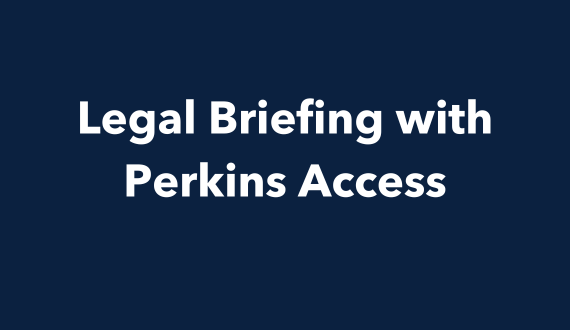Why accessibility is an essential part of diversity, equity and inclusion
Share

Implement your DEI strategy
Over the last few years, organizations of all types and sizes have stepped up their efforts to prioritize diversity, equity, and inclusion (DEI) in their hiring practices, policies, and workplace culture. Most people are familiar with DEI as it relates to race, ethnicity, gender, and sexuality — all of which are vitally important. But what’s often left out of the conversation is disability. 61 million Americans (1 billion people worldwide) live with a disability. At Perkins Access, we believe that to build a more equitable and inclusive world, accessibility needs to be prioritized by organizations that value DEI.
Accessibility means making sure that people of all abilities can fully engage with every aspect of your organization, whether they’re employees, vendors, customers, or partners. In most cases, there are actual legal requirements around accessibility. But in every case, it’s the right thing to do.
Typically, when people think about accessibility, physical accommodations like ramps, elevators, automatic doors, and accessible restrooms come to mind. But there’s much more to accessibility than that, including one of the fastest growing needs: digital accessibility.
To achieve accessibility in your organization, you’ll need to look at three key areas:
Your culture
At the heart of any truly accessible organization is a culture where people understand and respect the needs of people with disabilities. It starts with educating your employees about the barriers and prejudices faced by people with visual, auditory, physical, cognitive, and other disabilities and explaining the role of accessibility. It’s also important to foster an environment where people can have honest — if sometimes uncomfortable — conversations about disability.
Your spaces and experiences
The Americans with Disabilities Act (ADA) requires that your facilities be physically accessible to the public. In today’s wired world, workplaces and points of sale often include digital components. For your customers, that could include in-store kiosks, self-checkout stations, credit card terminals, or touch-screen menus. In your workplace, you may have digital interfaces for entering the building, touchscreen elevator controls, and digital vending or parking payment machines. All of these can (and should!) be made accessible to people with disabilities.
Your digital information and experiences
If you’re like most organizations today, the vast majority of your information and content — from product and service details, to videos, to documents and beyond — lives on your website. Customers may use your site to make purchases, view their account information, or do other tasks. If they can’t fully engage, they’ll go elsewhere. Making your website accessible is also the law. At minimum, it should meet the latest Web Content Accessibility Guidelines (WCAG).
Making your digital information accessible is also important when it comes to your employees — both current and potential. Job searchers will come to your website looking for career opportunities and job applications. Follow the best practices for disability inclusion in the workplace — from hiring to career development, and everything in between. Your existing employees, meanwhile, need to be able to access your business systems and software, like CRM, email, and time tracking. It helps to have procurement policies that make accessibility one of the selection criteria for new vendors, software, and other tools. There should also be an HR or IT point person that employees can go to when they need accommodations.
When you make your hiring practices and workplace tools accessible, you’ll be able to recruit and retain talented people with disabilities — which, as it turns out, is good for business. An Accenture study from 2018 found that companies who led in hiring people with disabilities saw vast improvements in their everyday performance, including 72% more productivity, 45% increase in workplace safety, 30% higher profit margins and 200% higher net income.
Where to begin your accessibility effort
So much of the way people work, make purchases, find information, and navigate everyday life today happens online, or with digital devices and tools. If you’re committed to inclusion, digital accessibility is the natural place to start.
We can help. As a division of Perkins School for the Blind, we live and breathe accessibility. Our experts can help you integrate digital accessibility throughout your culture, including your people, processes, and policies. We’ll assess where you are today, find areas for improvement, and work with you to create a comprehensive digital accessibility strategy. We can help you execute that plan, too, with a full range of services, from conducting WCAG audits, to training your team, to crafting a VPAT or commitment statement that shows customers and shareholders that you’re committed to accessibility.
Ready to make digital accessibility part of your DEI efforts? Contact us to talk to a Perkins Access expert today.




